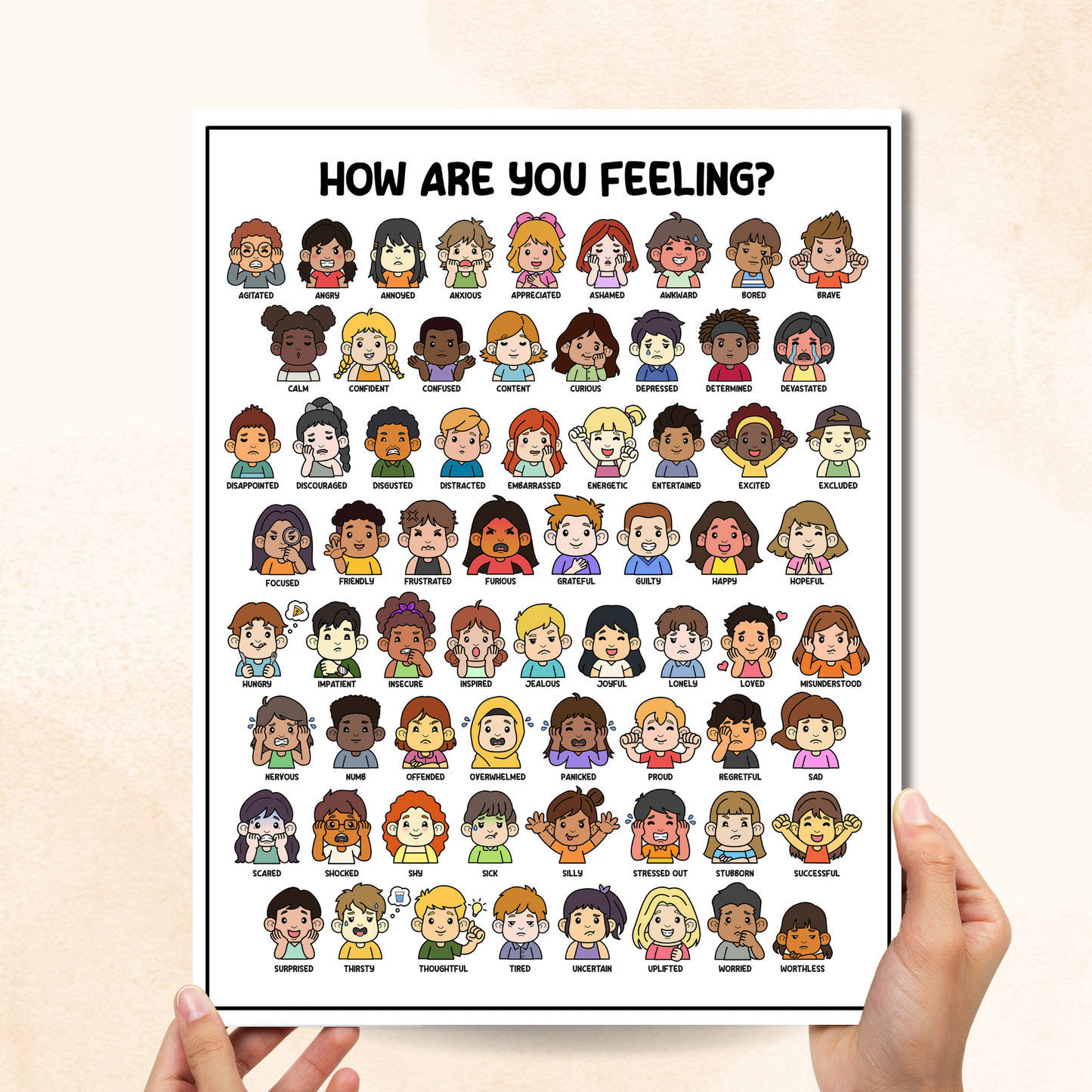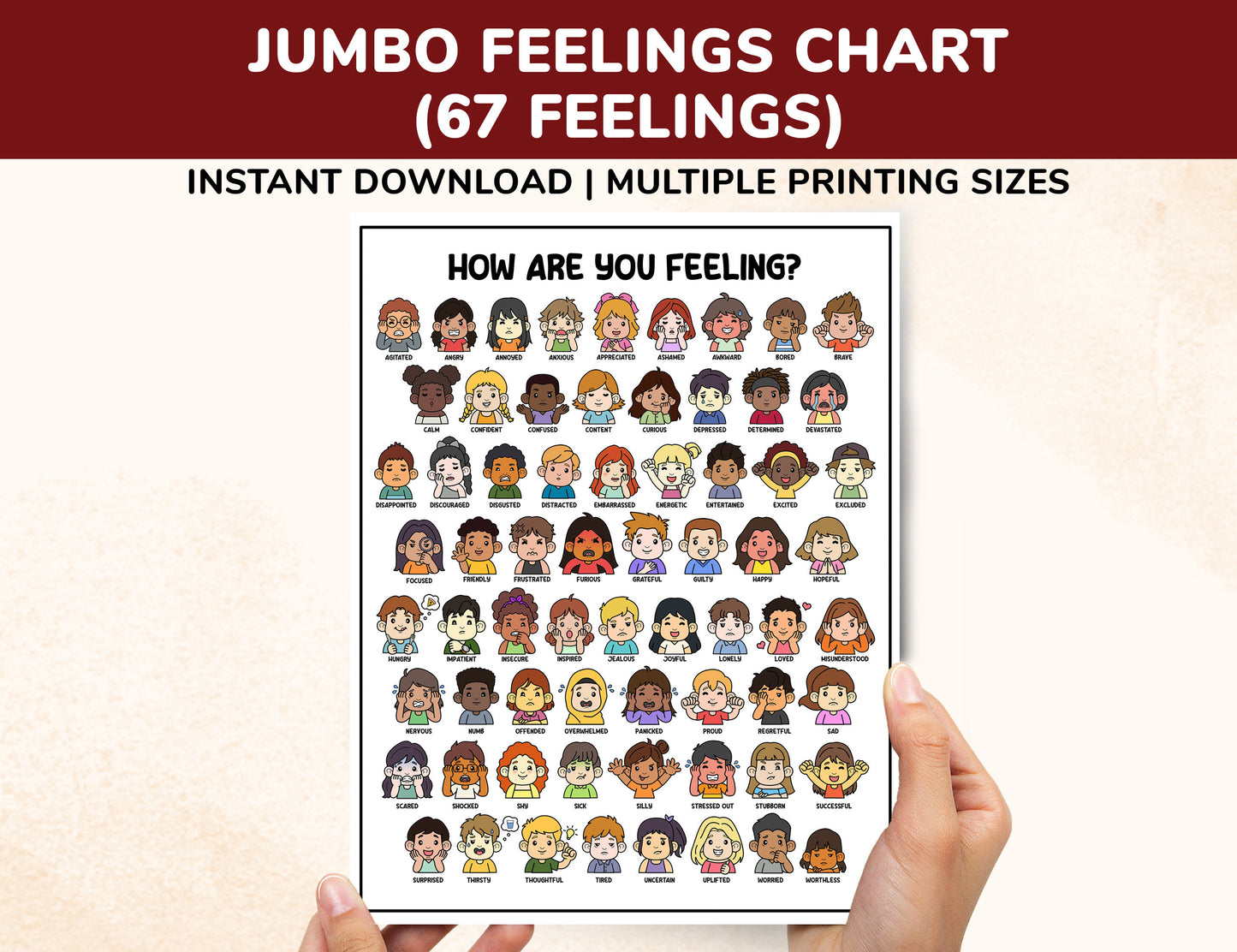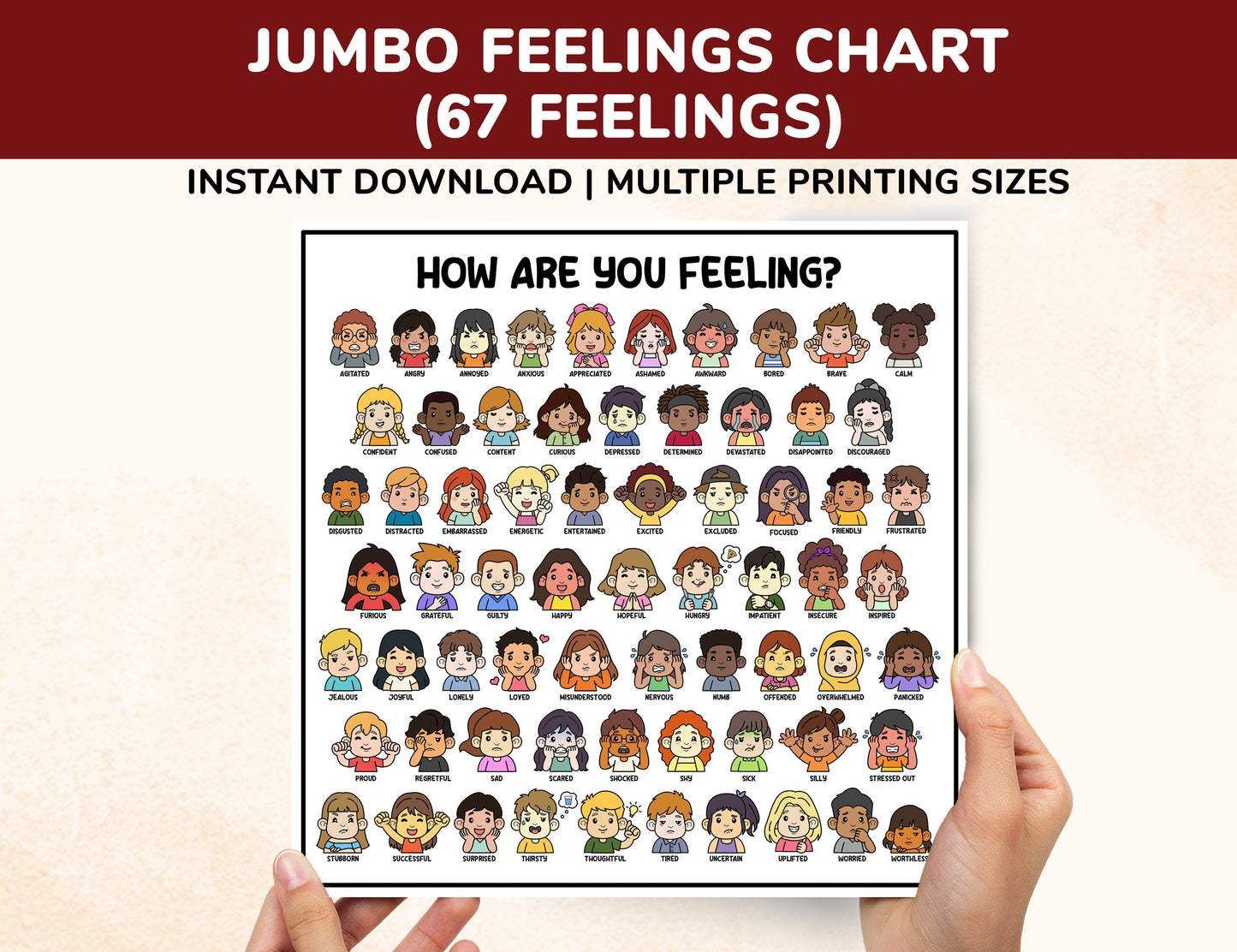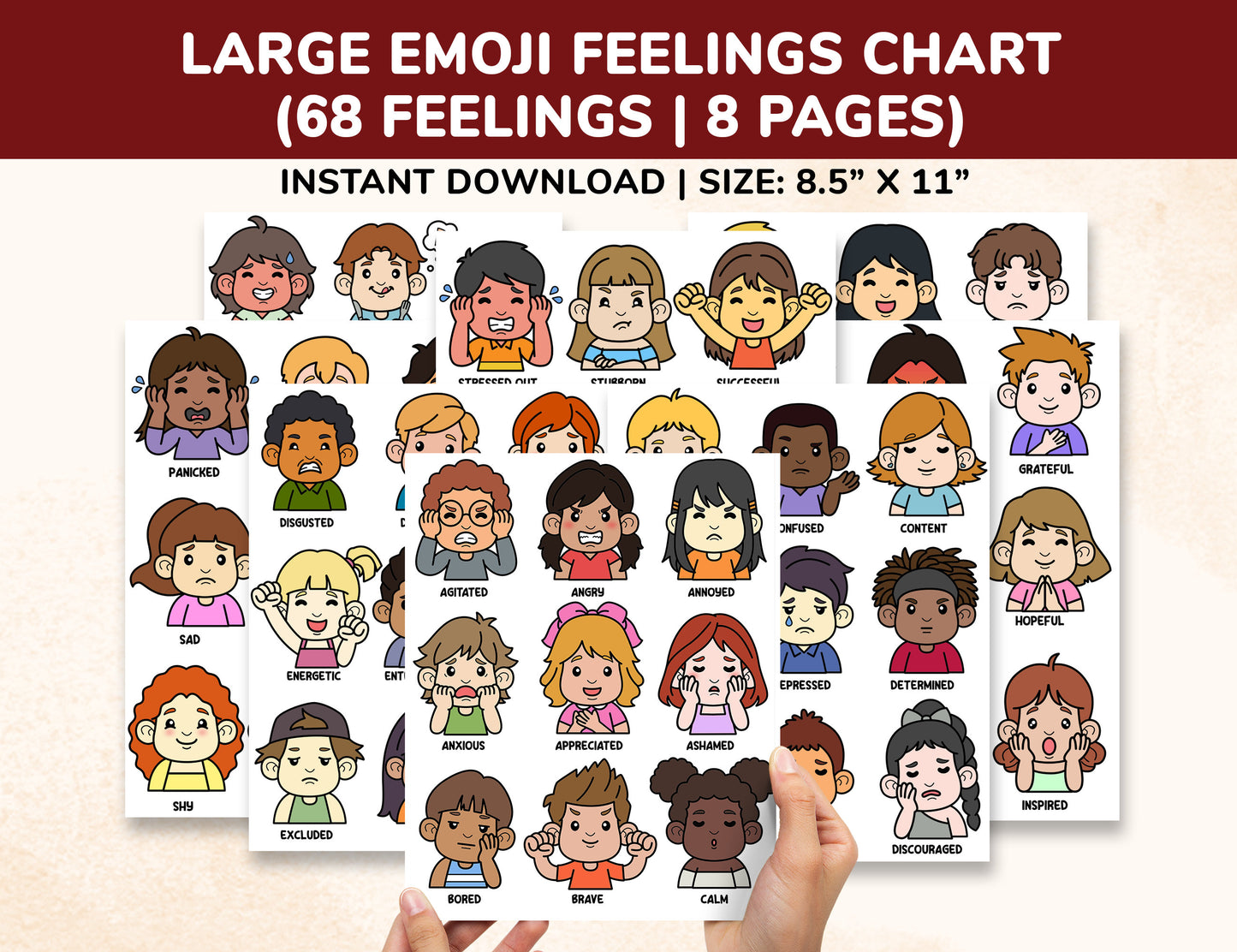How Are You Feeling Chart (Extra Large)





Checking in on feelings means taking a moment to recognize and understand how one is feeling. It’s an important skill for young people to learn because it helps them stay in tune with their emotions. Studies also reveal that developing this at a young age can lead to better emotional regulation and mental health as they grow older.
The How Are You Feeling Chart (Extra Large) is a visual guide designed to help young people express their emotions and improve their emotional language skills. The chart features 67 characters, each representing a different emotion, along with 8 additional pages displaying 9 characters per page with one page featuring 4 characters. Emotions highlighted on the chart include awkward, energetic, proud, scared, sick, and uplifted.
Using this chart helps kids and teens label their emotions, especially when they are dealing with difficult feelings and struggling to find the right words. They can keep a copy in their notebooks or hang it in their calm-down corner for easy access.
Parents and teachers can also keep a copy of this poster for daily check-ins and one-on-one conversations with the child or teen to better guide them in identifying and discussing their emotions.
Some of the main characters from this poster can be found on our Mental Health Center Kids YouTube Channel.
*This item is an instant digital download. A link to download your files will be emailed to you once payment is confirmed.
Want more resources like this? Check out our full catalog of feelings worksheets and handouts.
References:
- Blachly, M., & Dean, N. (2019). Feelings Charts Instead of Behavior Charts: Radical Love Instead of Shame. Ethics in Education. Retrieved from https://educate.bankstreet.edu/gse/1
- Safran, S., & Safran, J. (1984). The self-monitoring mood chart: Measuring affect in the classroom. TEACHING Exceptional Children, 16(3), 172-175. https://doi.org/10.1177/004005998401600306
- Instant digital download
- File: PDF
- Size: 8.5" x 11"
My kid is drawn to this method of sharing feelings. Product looks great and is totally usable!
Great resource with excellent quality for larger printing.
Excellent, very effective!
We're thrilled you're enojying the feelings chart, Holly! Thanks for the excellent feedback.
its a large chart but be aware as a digital download you are limited to the size printer you use. For this to be fully utilized you’ll want to take it to someplace like Fedex and have them print it up to size
Thanks for pointing this out, Kenneth! You're absolutely right that our digital downloads print to the size of your printer. Local print shops like FedEx Office or Staples can print these charts in large formats for poster-sized results. We appreciate you highlighting this practical tip! Additionally, if you happen to encounter printing issues at print shops, please reach out through our contact page and we'll be happy to help you resolve the issue.
Exactly as described – cannot wait to utilize this!!






